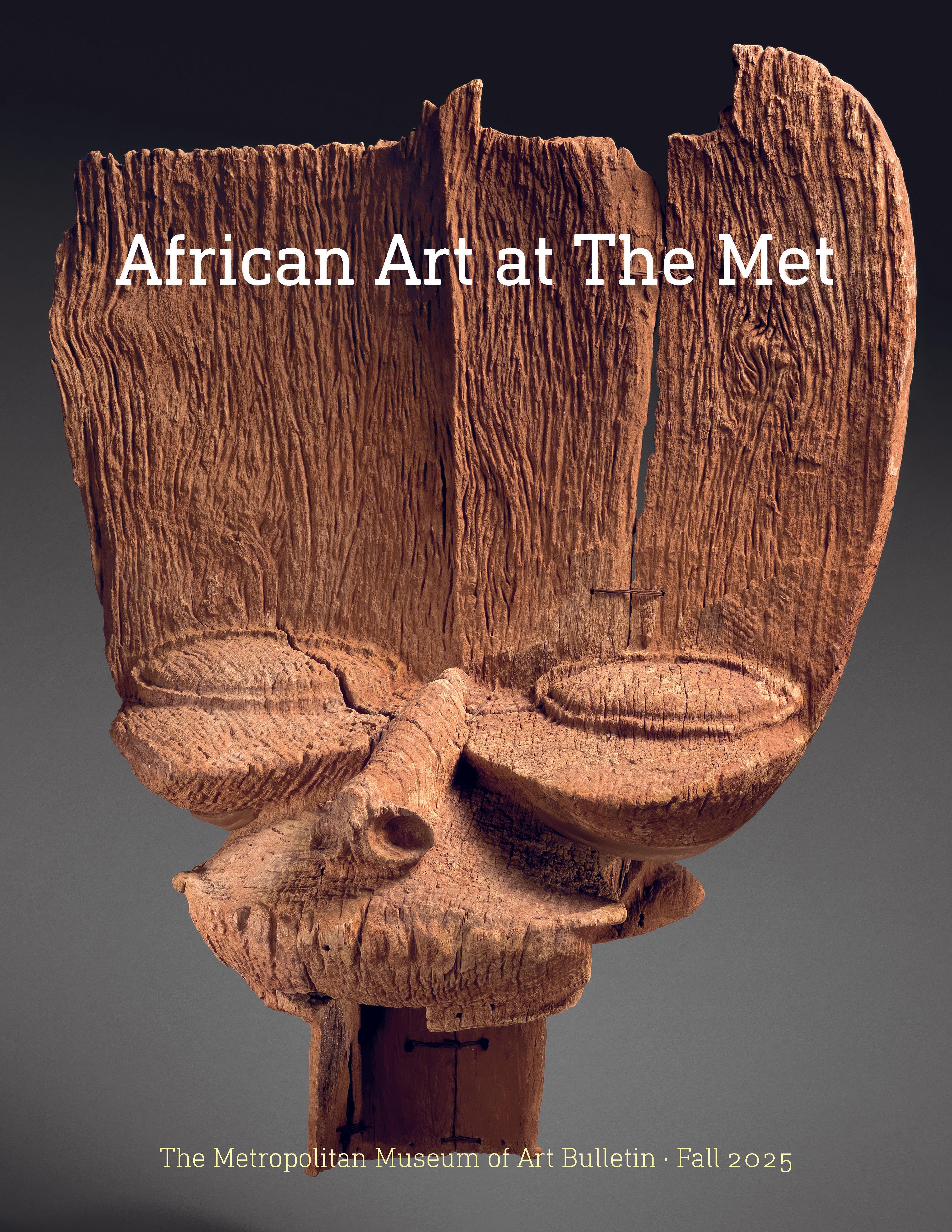Mäsqälä qǝddase (liturgical cross)
Imbued with symbolic meaning and protective powers, crosses have been used as a sign of Ethiopian Orthodox Christian devotion since at least the fourth century A.D. Individual patrons commissioned crosses such as this example to give to religious institutions as acts of devotion. Here, the central trifoliate cross is amplified by a multiplicity of outwardly projecting pattée crosses that suggest organic luxuriance. The openings are both aesthetic and functional, heightening the object’s intricate silhouette while minimizing its weight. The earliest in the Museum’s collection from the Lasta region, this cross is contemporary with the later rock-hewn churches at Lalibela. Like other crosses and architectural elements typical at that site, this cross exhibits the split palmette motif. The palmette extends from circular joints at its base to form two opposed half-lunettes surrounding a pattée cross at the upper limits and sides of the primary cross. This motif alludes to the cross as the Tree of Life as well as to the divine aureole of Christ borne on the wings of the Four Beasts. The complex configuration relates this cross to a processional cross in the Walters Art Museum in Baltimore, but here the design is more elegantly attenuated and the execution is crisper and more sharply resolved.
Kristen Windmuller-Luna, 2014
Kristen Windmuller-Luna, 2014
Artwork Details
- Title: Mäsqälä qǝddase (liturgical cross)
- Artist: Northern Highlands artist
- Date: 12th–13th century
- Geography: Ethiopia, Lasta region
- Culture: Tigrinya peoples
- Medium: Bronze
- Dimensions: H. 12 7/16 x W. 5 7/16 x D. 1 in. (31.6 x 13.8 x 2.5 cm)
- Classification: Metal-Ornaments
- Credit Line: Purchase, Tianaderrah Foundation, Daniel and Marian Malcolm, Noah-Sadie K. Wachtel Foundation Inc. and Mr. and Mrs. Paul Ruddock Gifts, 2008
- Object Number: 2008.502
- Curatorial Department: The Michael C. Rockefeller Wing
More Artwork
Research Resources
The Met provides unparalleled resources for research and welcomes an international community of students and scholars. The Met's Open Access API is where creators and researchers can connect to the The Met collection. Open Access data and public domain images are available for unrestricted commercial and noncommercial use without permission or fee.
To request images under copyright and other restrictions, please use this Image Request form.
Feedback
We continue to research and examine historical and cultural context for objects in The Met collection. If you have comments or questions about this object record, please contact us using the form below. The Museum looks forward to receiving your comments.
